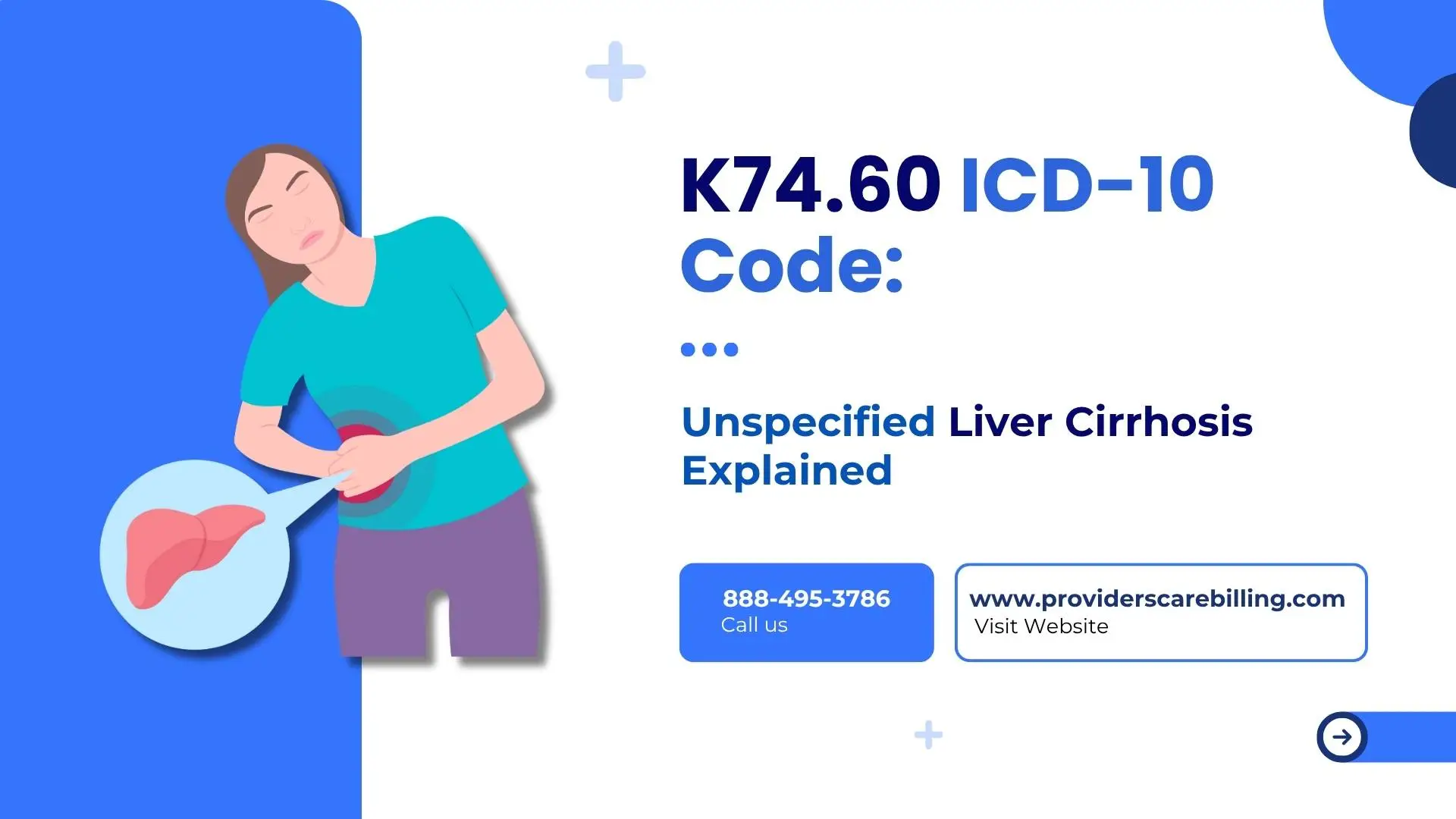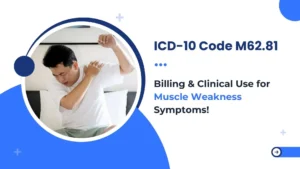ICD-10-CM code K74.60 is applied to the diagnosis of the unspecified cirrhosis of the liver in which the cause of the cirrhosis was not stated, along with those coded elsewhere. This code denotes a serious liver disease in which normal liver tissue is slowly replaced by scars, such that the normal functioning of the liver is hampered. This scarring disrupts the activities of the liver, which involve the production of proteins, protection against infection, the purification of blood, and digestion, as well as sugar storage, among others.
Did you know that cirrhosis is a condition that is prevalent in approximately 4 million people in America, but a misdiagnosis of this case by insurance providers would mean that you could lose a claim and revenue?
What is Cirrhosis?
Liver Cirrhosis is a late condition or phase of scarring or fibrosis of the liver tissue due to various kinds of diseases and problems. The liver eventually gets seriously damaged to the extent that it ceases to operate effectively. Long-term liver diseases also lead to cirrhosis. In this case, the liver attempts to regrow, but constant incorrect regeneration causes the growth of scar tissue, which interferes with the liver’s functioning.
Liver cirrhosis is a progressive condition, and this implies that the condition will deteriorate with time. The last stage is liver failure, but as it advances, patients are likely to experience the following symptoms:
- They develop hepatic encephalopathy
- Their urine will be darker in colour
- Their feces will be of a lighter color
- They develop jaundice, which can be a symptom of diseases of the liver, such as chronic hepatitis and other inflammatory liver conditions.
- Gastrointestinal problems, particularly with fatty food
- Weight Loss can be a significant symptom associated with chronic liver diseases such as cirrhosis.
What are the Methods of Diagnosis of Liver Cirrhosis?
Liver cirrhosis can be diagnosed using physical examination and history for the ICD-10 code K74.60 of the patient. Nevertheless, tests like blood tests, ultrasound, CT scans, and liver biopsy are usually carried out instead to determine conditions such as chronic hepatitis. Upon verification, the diagnosis should now be effectively coded to be charged and documented correctly on the medical record. Here, the ICD-10 code of the correct code of liver cirrhosis is very important.
Which ICD codes of liver cirrhosis can I use?
When you need ICD codes of liver cirrhosis, there is plenty to choose. The following are the six such codes, including K74.6, which you may apply when attending to patients with this horrible liver issue, including fibrosis and cirrhosis of the liver.
1.K71.7 – Toxic hepatic disease: fibrosis; cirrhosis, liver:
This is an ICD-10 code that is intended to be assigned to patients who have been proven to have toxic liver diseases. It should also be ascertained that the patients possess fibrosis and cirrhosis of their liver, respectively.
2.K74.3 – Primary biliary cirrhosis:
The said ICD-10 code is intended to be used against a confirmed case of the primary biliary cirrhosis, better known as the primary biliary cholangitis. The bile ducts of this liver are destroyed slowly by this type of liver cirrhosis..
3.K74.4 – Secondary biliary cirrhosis:
This is an ICD-10 code to be applied to a patient who has been confirmed to have secondary biliary cirrhosis, which may be linked to chronic hepatitis or other inflammatory liver conditions. This liver cirrhosis leads to the accumulation of bile, which destroys the liver tissues.
4.K74.60 – Specified Cirrhosis of the liver:
K74.60 is a code under ICD-10 that is expected to be applied only to a patient who has been diagnosed with cirrhosis, yet one does not know the kind of liver cirrhosis a patient has. When liver cirrhosis of a patient is known, then a more specific code of ICD-10, such as those for chronic hepatitis or alcoholic cirrhosis of the liver, should be used.
5.K74.69 – Other cirrhosis of liver:
The ICD-10 is designed to be used whenever cirrhosis (liver) is confirmed in a patient. This ICD-10 code is to be applied only in case the liver cirrhosis of the patient has no particular ICD-10 code, including those that are elsewhere classified.
6.P78.81 – Congenital cirrhosis (of liver):
The specified ICD-10 code is supposed to be applied to treating patients who are newborns and the presence of congenital cirrhosis is clinically established, as it is a rare type of liver cirrhosis which may be diagnosed shortly after a child is released.
Example
A 60 year old patient comes to the emergency department with abdominal swelling (ascites), yellowing of the skin and the whites of the eyes ( jaundice ), and fatigue. Imaging detects widespread liver scars. The provider suspects cirrhosis, and there are additional tests that need to be done to determine the underlying cause, such as viral hepatitis or other liver diseases. In this case, code K74.60 will be applied, as it is not yet clear what type of cirrhosis has developed.
Do you want to simplify the medical billing process in your practice?
Contact Providers Care Billing LLC now has a professionally organized team of experts to cover all your difficulties in medical coding and billing, particularly for complex cases involving chronic liver diseases.
📞 Call Now: 888-495-3786
📧 Email: Info@providerscarebilling.com
The significance of the proper use of code
Appropriate use of K74.60, ICD-10-CM codes is important to healthcare professionals for the following reasons:
1. Proper Diagnosis and Remedy:
Accurate coding guarantees the correct capture of the health condition of the patient in medical records, which is important for reimbursement purposes and in the planning of the treatment.
2. Billing and Reimbursement:
K74.60 ICD-10-CM is needed when it comes to proper billing and reimbursement of medical care. The use of wrong codes would lead to a loss of claim and money to the provider, particularly when dealing with chronic liver diseases.
For preventive care and early detection in patients at risk of liver conditions like cirrhosis, understanding the Annual Wellness Visit CPT Codes is equally essential for proper Medicare billing.
3. Data Analysis and Research:
Epidemiological studies and the investigation of the trends and outcomes of liver disease are supported by K74.60 ICD-10-CM data to monitor public health. Using the appropriate codes guarantees the accuracy of important information.
Conclusion
Liver cirrhosis is a serious condition that needs proper coding to get reimbursement and perform the finest job for your patients. Knowledge of the existing codes of K74.60 ICD 10 on cirrhosis and its complications allows healthcare professionals to prevent typical billing issues and increase the chances of avoiding claim rejection. Regardless of the severity of cirrhosis (whether you are working with simple cirrhosis or complicated cirrhosis), the correct usage of the K74.60 ICD-10 codes can greatly increase the effectiveness of your medical practice.
FAQS
Q: What is the ICD-10 simple liver cirrhosis?
Simple cirrhosis of the liver is coded K74.0 under the ICD-10 coding system, and unspecified cirrhosis of the liver is classified under K74.60, which may refer to alcoholic cirrhosis of the liver.
Q: Can it be a primary diagnosis, K74.60?
Yes, when K74.60 cirrhosis is the primary reason why a patient is being seen (in general, to monitor them, or to assess them regarding transplant).




